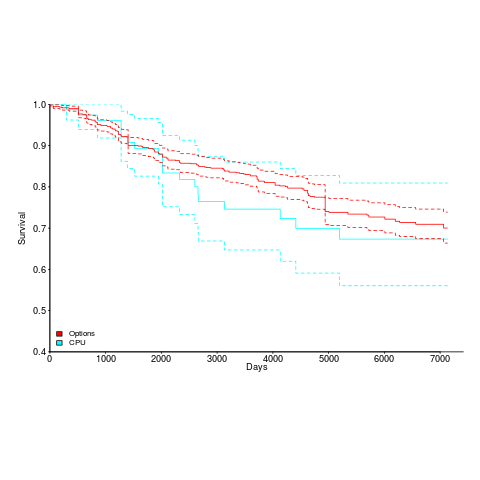Derek Jones from The Shape of Code
In the financial world, a call option is a contract that gives the buyer the option (but not the obligation) to purchase an asset, at an agreed price, on an agreed date (from the other party to the contract).
If I think that the price of jelly beans is going to increase, and you disagree, then I might pay you a small amount of money for the right to buy a jar of jelly beans from you, in a month’s time, at today’s price. A month from now, if the price of Jelly beans has gone down, I buy a jar from whoever at the lower price, but if the price has gone up, you have to sell me a jar at the previously agreed price.
I’m in the money if the price of Jelly beans goes up, you are in the money if the price goes down (I paid you a premium for the right to purchase at what is known as the strike price).
Do you see any parallels with software development here?
Let’s say I have to rush to complete implementation some functionality by the end of the week. I might decide to forego complete testing, or following company coding practices, just to get the code out. At a later date I can decide to pay the time needed to correct my short-cuts; it is possible that the functionality is not used, so the rework is not needed.
This sounds like a call option (you might have thought of technical debt, which is, technically, the incorrect common usage term). I am both the buyer and seller of the contract. As the seller of the call option I received the premium of saved time, and the buyer pays a premium via the potential for things going wrong. Sometime later the seller might pay the price of sorting out the code.
A put option involves the right to sell (rather than buy).
In the financial world, speculators are interested in the optimal pricing of options, i.e., what should the premium, strike price and expiry date be for an asset having a given price volatility?
The Black-Scholes equation answers this question (and won its creators a Nobel prize).
Over the years, various people have noticed similarities between financial options thinking, and various software development activities. In fact people have noticed these similarities in a wide range of engineering activities, not just computing.
The term real options is used for options thinking outside of the financial world. The difference in terminology is important, because financial and engineering assets can have very different characteristics, e.g., financial assets are traded, while many engineering assets are sunk costs (such as drilling a hole in the ground).
I have been regularly encountering uses of the Black-Scholes equation, in my trawl through papers on the economics of software engineering (in some cases a whole PhD thesis). In most cases, the authors have clearly failed to appreciate that certain preconditions need to be met, before the Black-Scholes equation can be applied.
I now treat use of the Black-Scholes equation, in a software engineering paper, as reasonable cause for instant deletion of the pdf.
If you meet somebody talking about the use of Black-Scholes in software engineering, what questions should you ask them to find out whether they are just sprouting techno-babble?
- American options are a better fit for software engineering problems; why are you using Black-Scholes? An American option allows the option to be exercised at any time up to the expiry date, while a European option can only be exercised on the expiry date. The Black-Scholes equation is a solution for European options (no optimal solution for American options is known). A sensible answer is that use of Black-Scholes provides a rough estimate of the lower bound of the asset value. If they don’t know the difference between American/European options, well…
- Partially written source code is not a tradable asset; why are you using Black-Scholes? An assumption made in the derivation of the Black-Scholes equation is that the underlying assets are freely tradable, i.e., people can buy/sell them at will. Creating source code is a sunk cost, who would want to buy code that is not working? A sensible answer may be that use of Black-Scholes provides a rough estimate of the lower bound of the asset value (you can debate this point). If they don’t know about the tradable asset requirement, well…
- How did you estimate the risk adjusted discount rate? Options involve balancing risks and getting values out of the Black-Scholes equation requires plugging in values for risk. Possible answers might include the terms replicating portfolio and marketed asset disclaimer (MAD). If they don’t know about risk adjusted discount rates, well…
If you want to learn more about real options: “Investment under uncertainty” by Dixit and Pindyck, is a great read if you understand differential equations, while “Real options” by Copeland and Antikarov contains plenty of hand holding (and you don’t need to know about differential equations).


